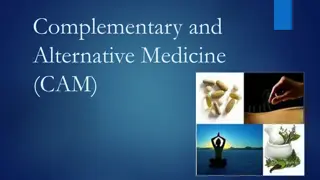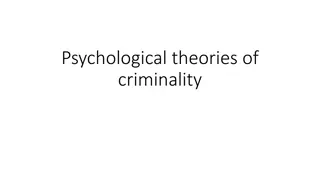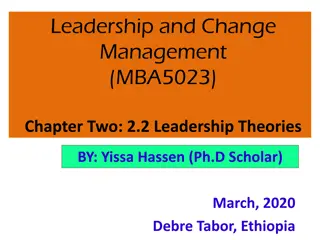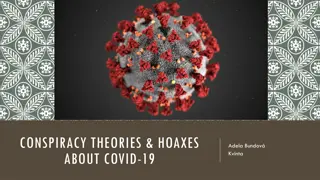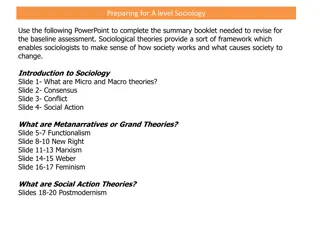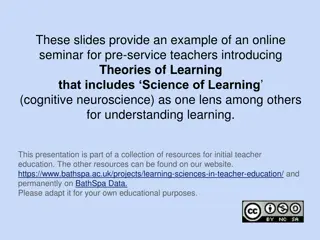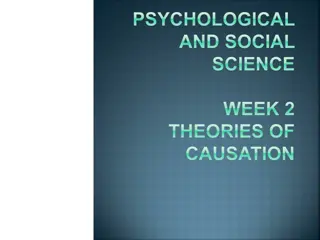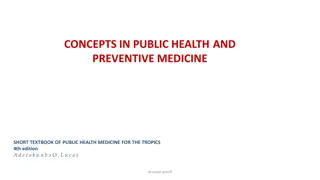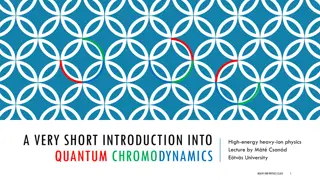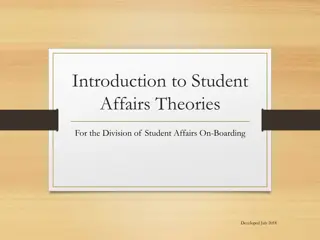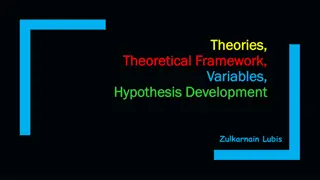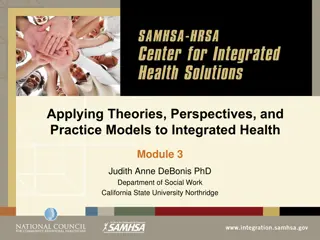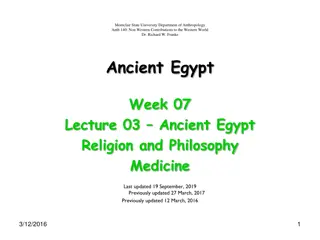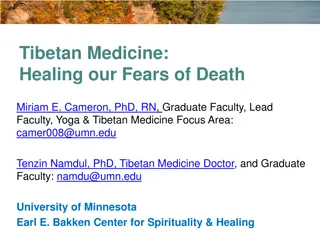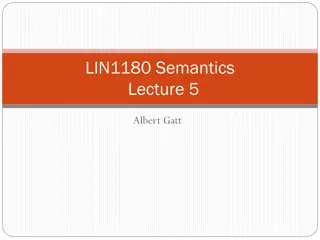Ancient Healing Practices and Theories in Medicine
Explore the ancient practices and theories in medicine, including the fascinating rituals of Asklepiadic incubation and the blending of magic and science in ancient healing. Delve into the application of observable events explained in terms of non-observables, effects produced through manipulation, and the varied approaches to understanding illness and cure.
Download Presentation

Please find below an Image/Link to download the presentation.
The content on the website is provided AS IS for your information and personal use only. It may not be sold, licensed, or shared on other websites without obtaining consent from the author.If you encounter any issues during the download, it is possible that the publisher has removed the file from their server.
You are allowed to download the files provided on this website for personal or commercial use, subject to the condition that they are used lawfully. All files are the property of their respective owners.
The content on the website is provided AS IS for your information and personal use only. It may not be sold, licensed, or shared on other websites without obtaining consent from the author.
E N D
Presentation Transcript
Incubation purification (bathing, change of clothes, sprinkling of water) before entry into sacred precinct sacrifice of inexpensive offerings: honeycakes, cheesecakes, figs evening entry into abaton segregation of male and female patients sleep in abaton repeat until dream (oneiros) provides cure upon recovery, thanks-offering (eukharist rion) made animal sacrifice to Asklepios and Hygieia on certain occasions, testimonial engraved and displayed immediate mediated
What Explains Asklepiadic Testimonia? Deceitful claim? Placebo effect? Natural cure? Seriousness of condition? Nature of cure ? Genuine miracle?
ANCIENT SCIENCE ANCIENT MAGIC theory over application observable events explained in terms of non-observables (kryptomena) observable events explained in terms of non-observables (kryptomena) effects produced by manipulating kryptomena deterministic causal network impersonal idiom (dynameis) effects produced by manipulating kryptomena deterministic causal network language active, efficacious, creative techniques performed by neutral agent public knowledge, openness to criticism failure results from (1) faulty theory, (2) flawed implementation or experimentation private (often banned ) knowledge failure results from (1) flawed implementation, (2) counter-magic, (3) character of agent, (4) chance acknowledged (if poorly understood) by society at large
ANCIENT SCIENCE ANCIENT MAGIC theory over application practice over theory observable events explained in terms of non-observables (kryptomena) observable events explained in terms of non-observables (kryptomena) effects produced by manipulating kryptomena deterministic causal network impersonal idiom (dynameis) effects produced by manipulating kryptomena deterministic causal network mixed idiom: personal (daimonia) and impersonal (dynameis) language active, efficacious, creative language neutral, descriptive techniques performed by neutral agent techniques performed by involved agent public knowledge, openness to criticism failure results from (1) faulty theory, (2) flawed implementation or experimentation private (often banned ) knowledge failure results from (1) flawed implementation, (2) counter-magic, (3) character of agent, (4) chance acknowledged (if poorly understood) by society at large acknowledged (if poorly understood) by society at large
Aims in PGM AIM Healing Knowledge Love Injury Miscellaneous Success Safety Invocation Service Horoscopes and General Astrology NUMBER/PERCENT 109/21% 102/20% 98/19% 61/12% 44/8.5% 42/8.2% 22/4.3% 22/4.3% 7/1.4% 6/1.2%
plant, herb drug, potion pharmakon medicine poison magic charm scapegoat
Doctrine of Signatures "Nature marks each growth ... according to its curative benefit"
Doctrine of Signatures "Nature marks each growth ... according to its curative benefit" appearance of natural material : body part :: sign : signified sign indicates therapeutic benefit relative to corresponding part appearance of natural material : innate property :: sign : signified
Curse (katadesmos) preparation / consecration of lamella invocation (agents / messengers) * chthonic deity (Hades, Persephone, Hekate, Hermes) * kakodaimon * nekydaimon designation of victim *identification of name and family *enumeration of parts list of desired results promise / threat self-identification as god or daimon deposition of lamella graveyard; grave of recently deceased child underground watercourse
Performatives What does uttering a performative do? Can performatives be negative? How are performatives verified?
Performatives Uttering a performative is, or is part of, the doing of a kind of action rather than the description of a thing, an action, or a state. Uttering a performative changes the reality to which it applies. This can include the speaker, the addressee, both, or some general situation. Performative utterances can be positive or negative: they can instate or cancel a state of affairs. Since performative utterances are not deictic or referential, they are not subject to verifiability: they cannot be true or false, and so are not evaluable on those terms. Performative utterances are instead evaluable in terms of appropriateness of context and (sometimes) effectiveness.
ERS (philtrokatadesmos, agg) LOVE CHARMS PHILIA (philtron, kharis)
ERS philtrokatadesmos ag g
ERS philtrokatadesmos (binding spell) ag g (fetching spell)
Eros Charm attraction (ag g ) and binding (katadesmos) restriction of sexual attention to NN alone restlessness, mental disturbance loss of physical and emotional self-control physical torture (binding, inflaming, whipping, piercing) rejection of husband and family compulsory movement (ag g ) from natal/conjugal house to house of NN culmination in intercourse
Philia Charm PHILIA philtron kharis
Philia Charm PHILIA philtron (love charm) kharis (beauty/favor/sex appeal)
EROS CHARM agog , philtrokatadesmos PHILIA CHARM philtron, kharis Terms incantation over amulets, knotted cords, rings, potions, ointments Description burns, tortures, maddens, impels victim to leave home and come to practitioner lust (eros) courtship outsider to destroy loyalty to natal family or spouse man, prostitute Action Effect affection (philia) Social context User Victim wife, social inferior husband, king, other authoritative male
EROS CHARM agog , philtrokatadesmos incantation over bound images, tortured animals, burning materials burns, tortures, maddens, impels victim to leave home and come to practitioner lust (eros) courtship outsider to destroy loyalty to natal family or spouse man, prostitute young women and men, usually in natal home PHILIA CHARM philtron, kharis Terms incantation over amulets, knotted cords, rings, potions, ointments Description binds and mollifies, reduces anger, increases esteem for practitioner; increases sex appeal (kharis) of practitioner Action Effect affection (philia) insider within existing relationship in need of repair Social context User Victim wife, social inferior husband, king, other authoritative male
Evil Eye What effects does evil eye have? How is evil eye believed to work? What relation to envy? What safeguards against evil eye? What social function?
carrier both human and animal effects both voluntary and involuntary dessication of both inanimate objects and living beings emanationist mechanism association with envy (invidia) protection against evil eye silence/rejection of praise counter-eye objects that deflect assertion of sexual potency association with liquids social functions explanation of misfortune redirection of guilt curb on ostentatious display redistribution of goods
actio in distans What ancient theories explain actio in distans?
actio in distans emission theory correspondence (sympathy/antipathy) theory doctrine of signatures
Sir James Frazer (1854-1941) Sympathy / Contagion
Sigmund Freud (1856-1939) Omnipotence of Thought
SIMILARITY Sympathetic, Mimetic, Homeopathic CONTAGION Contact
SIMILARITY Sympathetic, Mimetic, Homeopathic A X Y (likeness) = X (original) A Y A Y = A X CONTAGION Contact A X Y (part) = X (whole) A Y A Y = A X
SIMILARITY Sympathetic, Mimetic, Homeopathic A X Y (likeness) = X (original) A Y A Y = A X Metaphor CONTACT Contagious A X Y (part) = X (whole) A Y A Y = A X Synecdoche
Some Features of Language Language as intersubjective, hence immanently social Language and the constitution of the experienced world ordering and understanding naming and ordering ordering (however arbitrary) experienced as natural Language and techniques for reorganizing / reconstituting the experienced world translation linguistic tropes (metaphor, synecdoche)
Structuralist Assumptions 1. 2. 3. 4. 5.
Structuralist Assumptions 1. There is a human need to classify in order to understand. 2. Classification tends to be binary: BELOW / ABOVE 3. Whatever resists classification causes anxiety: FEMALE ? MALE 4. Transition between categories is potentially dangerous. 5. Whatever resists classification or fails to transition successfully from one category to another is dirt. 6. All dirt is taboo. 7. Whatever is taboo is powerful.
Dirt : Matter out of Place GARDEN HOUSE PLATE soil dirt filth
Uses of Language Referential/Deictic This frog is bleeding. Performative I curse you, frog! Expressive/Emoti ve Analogical Just as this frog bleeds Metaphorical The heaventree of stars hung with humid nightblue fruit. Performative Emotive Analogical Metaphorical Mumbojumbo Bleed, frog! Magical
Uses of Language This frog is bleeding. I curse you, frog! Bleed, frog! Performative Expressive/Emoti ve Analogical The heaventree of stars hung with humid nightblue fruit. Magical
Mumbojumbo TROPE transposition EXAMPLE sabaoth / asbotha psin ther n psither thern psi kuk bakuk bakakuk bakaxikuk abracadabra mumbojumbo (3x), (9x) ablanathanalba akramakariramamariramakarka a e i o u u i e a recombination rhyme repetition palindrome tonic vowel palindrome numerological cypher khabrakh thnesk r phikhr phur ph kh b kh pterygma, word square, concrete poetry shape
thing image word thing garlic spoken = garlic eaten
Names & Things the naturalness of one s own language the essential character of one s own name naming rituals private vs. public names names and curses names and invocations ( ) naming and creation
Linguistic Sign Referent Sign
Linguistic Sign Referent Sign







